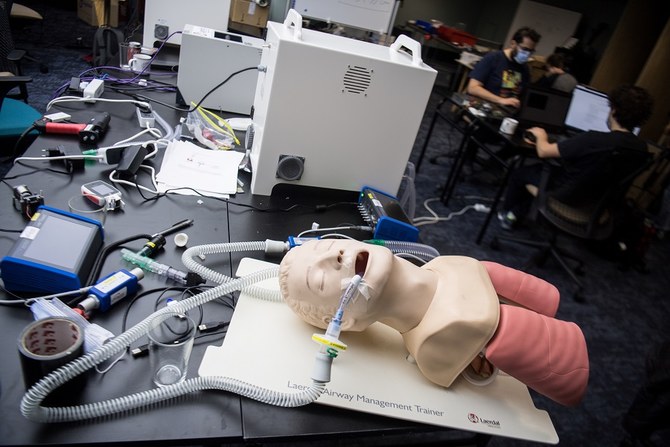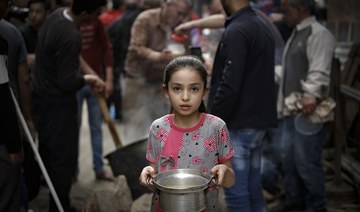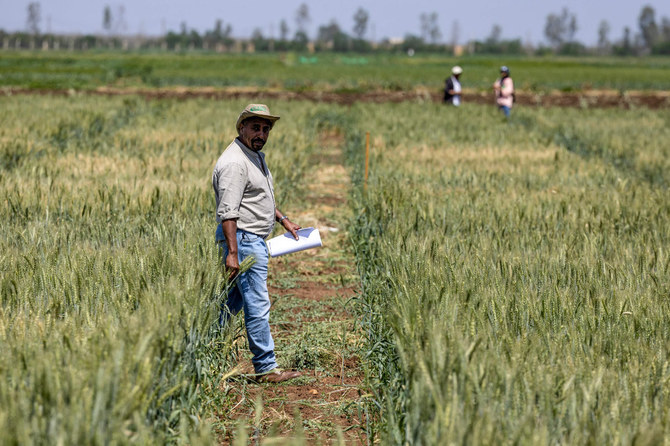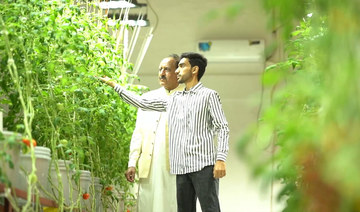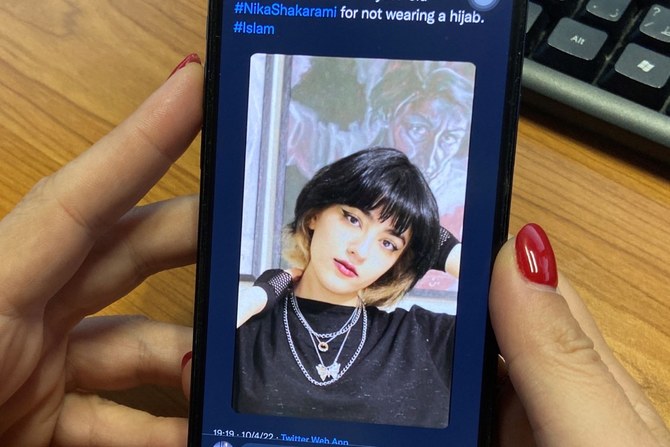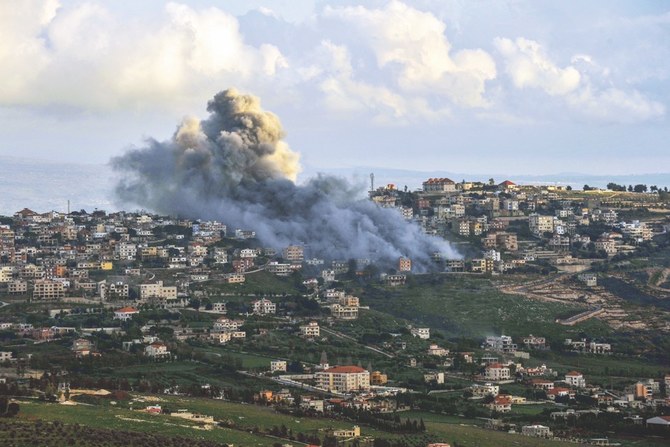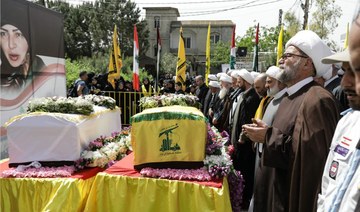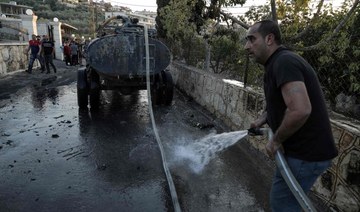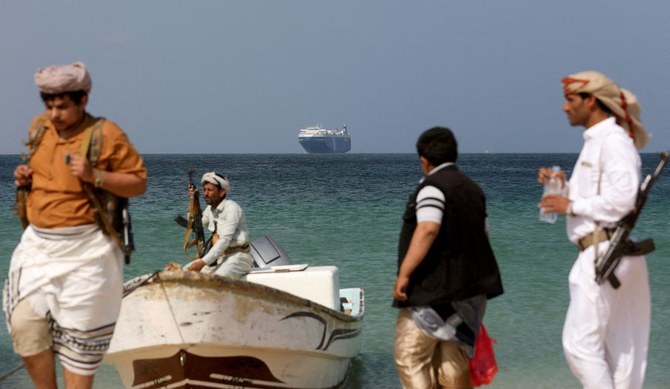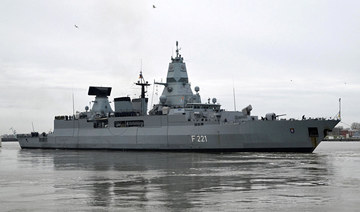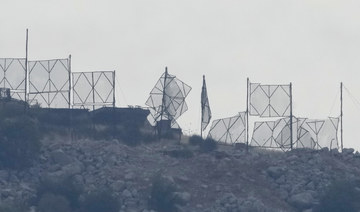DUBAI: Countries have intensified efforts to find a treatment for COVID-19, with the UAE recently announcing a breakthrough at a stem cell center in Abu Dhabi.
According to the UAE’s state news agency WAM, the aerosol treatment has undergone and successfully passed the first stage of clinical trials with further tests to demonstrate its effectiveness being carried out over the next two weeks.
The global coronavirus infections stood over 3.3 million early on Saturday, with more than 238,000 deaths.
May 2, 2020 (All times in GMT)
20:41 - Saudi Arabia isolates Dammam second industrial city, preventing entry and exit starting Sunday until further notice.
18:25 - Yemen reports three new cases of coronavirus, two in Aden and one in Taiz.
17:42 - The UAE announced 561 new cases of coronavirus and the death of eight patients.
16:31 - Egypt announced 298 new cases of coronavirus on Saturday bringing the total number of cases in the country to 6,193.
16:29 - Turkey's coronavirus death toll rises by 78 to 3,336 with 1,983 new cases confirmed, according to the health ministry.
16:07 - Italy death toll from coronavirus outbreak rises by 474 (vs 269 on Friday) to 28,710, while the total number of confirmed cases rises by 1,900 to 209,328.
15:17 - Algeria announced 141 new cases of coronavirus and 6 deaths on Saturday.
15:08 - UK government says virus death toll up 621 to 28,131.
13:35 - The governor of Taiz in Yemen has decided to close access to the province to prevent the spread of coronavirus. The province's mosques and markets will close and large gatherings are prohibited.
13:01 - Saudi Health Ministry records 1,362 new coronavirus cases and seven deaths in the Kingdom.
12:40 - Joggers, cyclists and surfers across Spain hurried out their homes on Saturday, allowed to exercise outdoors for the first time in seven weeks as the government began easing tough coronavirus restrictions.
12:20 - France extends health emergency until July 24.
11:45 - Iran’s death toll from the new coronavirus increased by 65 in the past 24 hours to 6,156 on Saturday, Health Ministry spokesman Kianush Jahanpur said.
11:25 - Kuwait reports 242 new #oronavirus cases, raising the total number of infected people to 4,619.
11:20 - Lebanon reports one coronavirus death, five new cases, raising number of infected patients to 733 with fatalities at 25.
11:05 - Spain’s number of coronavirus cases rises to 216,582 on Saturday from 215,216 on Friday, said its health ministry.
10:45 - Popstars Ariana Grande and Justin Bieber will team up for the first time in their careers to duet on a benefit project for emergency workers on the coronavirus frontline. FULL STORY HERE.
10:35 - Qatar confirms 776 new coronavirus cases, bringing total to 14,872.
10:30 - Bahrain has recorded 103 new coronavirus patients.
10:17 - Lebanon has reported one coronavirus death and five new cases, raising the number of infected patients to 733 with fatalities at 25.
10:06 - Iran’s death toll from new coronavirus increased by 65 in the past 24 hours to 6,156, Health Ministry spokesman Kianush Jahanpur said in a statement on state TV.
The total number of diagnosed cases in Iran, one of the hardest hit Middle Eastern countries, has reached 96,448, he said, adding that 2,787 were in critical condition.
09:50 - Over 1.5 million cases of coronavirus have been recorded in Europe, just under half the worldwide total, according to an AFP tally.
With at least 1,506,853 infections, including 140,260 deaths, Europe is the hardest-hit continent. Across the world, 3,350,224 cases and 238,334 deaths have been recorded.
09:33 - Spain’s coronavirus death toll hit 25,100 after 276 people died overnight, the health ministry said. Total cases rose to 216,582 from 215,216 on Friday.
Spain has had one of the worst outbreaks in the world, but is past its peak and gradually easing lockdown restrictions.
09:15 - 101 people have recovered from coronavirus in Kuwait, raising the total number of recoveries to 1,703.
09:04 - Pakistan's total number of coronavirus infected people has reached 18,000, including 417 deaths.
09:01 - Indonesia recorded 292 new coronavirus cases, taking the total number of infections to 10,843, said health ministry official, Achmad Yurianto.
Yurianto also reported 31 new deaths, taking the total number of fatalities to 831. The number of people who have recovered from COVID-19, the disease caused by the coronavirus, rose by 74 to 1,665, he said.
The country has tested more than 79,800 people for the virus, he said.
08:44 - Malaysia reported 105 new coronavirus cases on Saturday, bringing the total number of infections in the country to 6,176.
The number of deaths remained at 103, unchanged from Friday.
08:43 - Russia reported 9,623 new cases of the coronavirus in the past 24 hours, its highest daily rise, bringing the total to 124,054.
The nationwide death toll rose to 1,222 after 57 people died in the last 24 hours, Russia’s coronavirus crisis response center said, after revising the previous day’s tally.
08:29 - The Philippines said it has recorded 156 new cases of the novel coronavirus and 24 more deaths, bringing the total number of infections in the country to 8,928 and the fatalities to 603.
It also said that 40 more individuals had recovered from infections, bringing the recoveries to 1,124.
08:27 - Sudan has registered 91 new coronavirus patients and 7 deaths. Earlier in April, the UAE sent seven tons of medical supplies to Sudan to support their efforts against the coronavirus, state news agency WAM reported.
The shipment reached over 7,000 healthcare professionals and included test kit supplies.
08:00 - Gilead Science Inc’s antiviral drug remdesivir has been granted emergency use authorization by the US Food and Drug Administration for COVID-19 on Friday, clearing the way for broader use of the drug in more hospitals around the United States.
During a meeting in the Oval Office of the White House with President Donald Trump, Gilead Chief Executive Daniel O’Day called the move an important first step and said the company was donating 1.5 million vials of the drug to help patients.
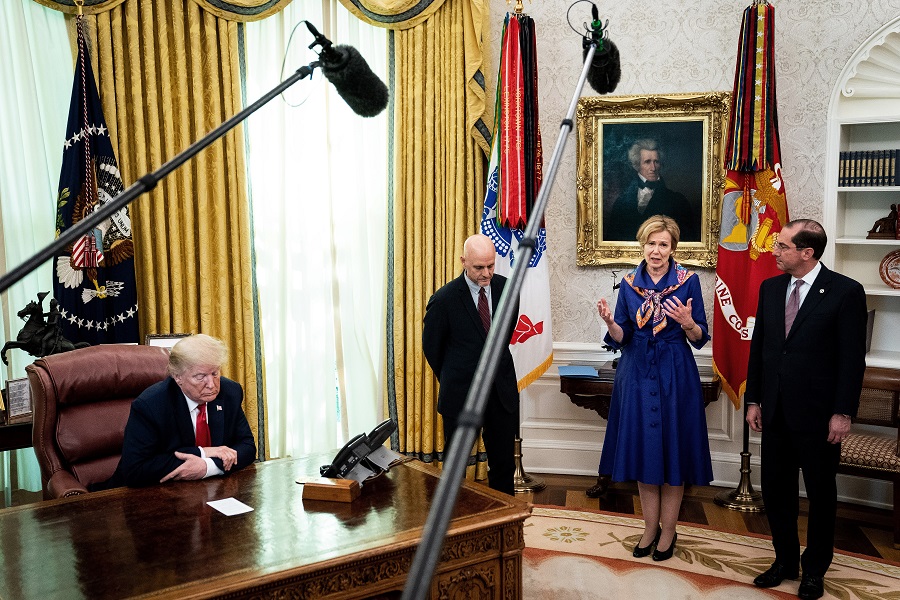
08:00 - Oman has reported a further 36 people testing positive for the coronavirus, raising the total of infected patients to 2,483.
Whole areas of Oman remain under a strict lockdown – including the capital, Muscat.
06:00 - Yemen reports its first known case of coronavirus in the southwestern Taiz governorate, raising the number of reported diagnosed infections to seven with two deaths in one of the world's most vulnerable countries.
But the United Nations says it fears there are more infections as the virus could be spreading undetected.
04:08 – Singapore has announced it was easing its lockdown in the country over the next few weeks.
It will allow some businesses to reopen on May 12, and some students will be able to go to schools in small groups on May 19.
02:38 – Germany has reported 945 new cases of COVID-19, raising the total to 161,703 with 94 new fatalities. Death toll stood at 6,575.
02:30 - A small coronavirus cluster has emerged at a meat factory in the Australian state of Victoria, health officials said on Saturday, as parts of the country started easing social distancing restrictions after suppressing the infection rate to below 1 percent.



